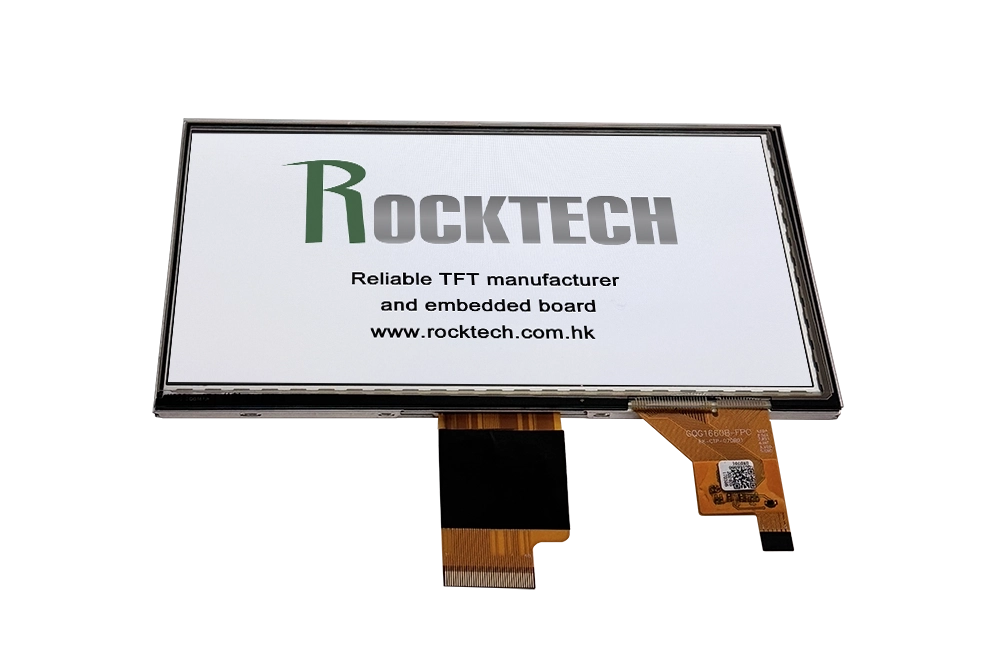Customizing a TFT LCD display is critical for ensuring performance, compatibility, and durability in embedded systems. This guide outlines the key areas to consider when creating a custom TFT LCD for your application.

Both the TFT panel and the capacitive touch panel (CTP) typically use custom-designed Flexible Printed Circuits (FPCs) for integration with your product’s mainboard. Due to mechanical constraints and enclosure designs, the FPC shape often needs to be customized — including asymmetrical outlines, specific bending zones, or extended lengths.
In many cases, component placement must be carefully planned: passive elements such as capacitors and resistors, or even ICs (e.g., touch controllers), may need to be kept away from screw holes, heat sinks, or mechanical frames to avoid interference or short circuits.
Additionally, the pinout configuration may require customization to match your SBC's connector definition. This can include adjusting the FPC’s pin sequence, voltage levels, and current-carrying capacity to ensure electrical compatibility and signal integrity.
Supported interfaces for TFT modules typically include LVDS, RGB, MIPI DSI, and SPI, while CTP FPCs commonly use I²C or USB. At Rocktech, we assist in validating your connector specs and can adapt the FPC accordingly.
Backlight brightness is a critical factor in ensuring screen readability under various lighting conditions. For applications in outdoor environments or high ambient light areas — such as kiosks, industrial controls, or medical devices near large windows — a high-brightness backlight (typically 800 to 1500 nits) significantly improves visibility and user experience.
In addition to brightness levels, the color temperature of the LED backlight can also be customized. Choosing between warm (3000K–4500K), neutral (5000K–6000K), or cool white (6500K–8000K) LEDs allows for fine-tuning the display's color tone, making it suitable for applications with specific color rendering requirements, such as medical imaging or branding-sensitive products.
Rocktech provides backlight customization options that include brightness intensity, LED color temperature, power consumption tuning, and backlight driver design to ensure both performance and efficiency.
The shape and integration method of a Capacitive Touch Panel (CTP) are critical in both functionality and mechanical fit. Rocktech supports fully customizable CTP shapes — including rounded corners, asymmetric outlines, custom cutouts for logos, buttons, or mechanical constraints.
For bonding, there are two main techniques: optical bonding and air bonding.
Optical bonding uses a transparent adhesive (such as OCA or silicone gel) to completely fill the gap between the CTP and the TFT panel. This method eliminates internal reflections, improves sunlight readability, strengthens the structure, and prevents condensation. It’s highly recommended for outdoor, ruggedized, or medical applications.
Air bonding, also known as tape bonding, involves adhering the CTP to the TFT module using adhesive around the edges. While more economical and faster to assemble, it may result in lower optical performance due to internal reflections. It’s suitable for indoor or cost-sensitive applications.
Rocktech provides full flexibility in CTP shape design, bonding method selection, and controller IC integration (via I²C or USB), ensuring a perfect fit for your device environment and usage scenario.
Surface treatment technologies are essential for improving display usability, especially in harsh or high-light environments. There are three main types of coatings used on TFT LCD panels:
Anti-glare treatment reduces the surface reflectivity of the screen by diffusing incoming light. It softens sharp reflections, making content more visible under direct lighting or in bright rooms. AG is commonly used in industrial equipment, ATMs, and automotive dashboards.
Anti-reflection coating minimizes light reflection by adding multiple optical layers that cancel out incident light. Unlike AG, which diffuses light, AR enhances light transmission and maintains display sharpness. It's ideal for high-end applications such as medical monitors and high-resolution touch displays.
Anti-fingerprint treatment applies an oleophobic (oil-repellent) layer to the screen surface. It reduces smudges from finger oils and makes the screen easier to clean. AF is especially valuable for touchscreen interfaces in public or professional environments.
These treatments can be applied individually or in combination (e.g., AG+AF or AR+AF) depending on your application needs. At Rocktech, we help you select the most suitable surface treatment for both optical performance and durability.
Based on your product integration method, you can choose open frame for embedded projects or fully enclosed modules for plug-and-play usage.
Rocktech offers full-stack customization for embedded and industrial display solutions.